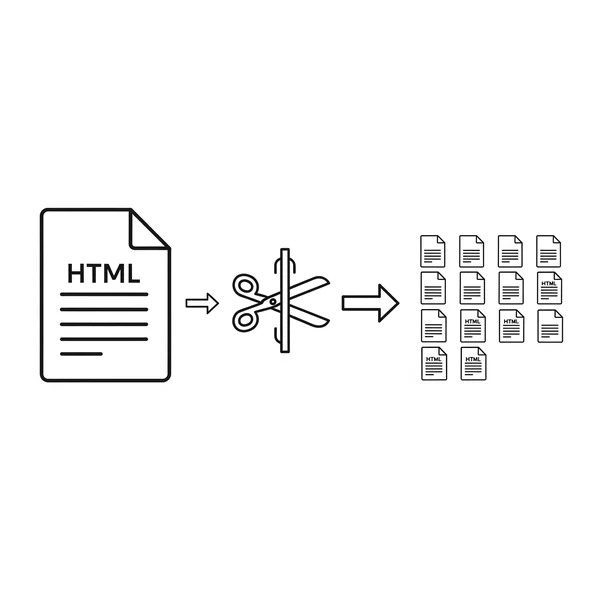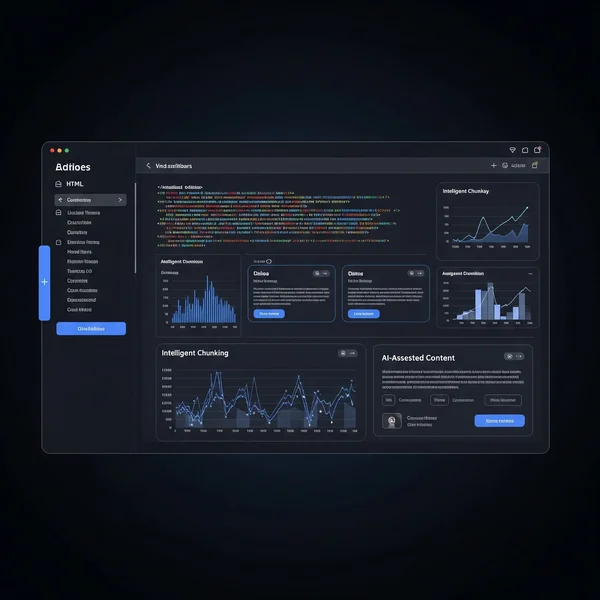View Large HTML Files Without Crashing: Pro Tips
Strategies for Smooth Large File Viewing
Ever tried to open a seemingly innocent HTML file, only to have your browser freeze, sputter, or completely give up the ghost? If you've worked with large data reports, extensive logs converted to HTML, or complex single-page application source code, you've likely encountered the frustration of trying to view large html file content. How to view large html without crashing? This common issue often stems from browser memory limitations and the sheer processing power required. This guide will explore why these problems occur and offer pro tips and strategies, including how an efficient large html viewer might fit into your workflow for handle large html tasks.
Why Do Large HTML Files Cause Viewing Problems?
Why do large html files cause problems? Understanding the root cause can help in finding effective solutions. It's not just about file size in megabytes, but also what's inside that file.
Browser Memory Limitations and Rendering Engine Strain
Web browsers, despite their sophistication, have finite browser memory limitations. When a large html file is loaded, the browser's rendering engine attempts to parse the entire document, build a massive Document Object Model (DOM) tree, and calculate layout and styles for potentially tens of thousands of elements. This puts an immense rendering engine strain, often exceeding available memory and leading to an html viewer crashing or becoming unresponsive.

The Impact of Complex DOM Structures and Inline Resources
The complexity of the HTML itself plays a huge role. Deeply nested complex DOM structures require more memory and processing to map out. Furthermore, if the HTML contains large amounts of inline resources like base64 encoded images, extensive inline CSS, or lengthy JavaScript blocks, these add to the burden, exacerbating html viewer memory issues even before considering external resources.
General Strategies for Handling Large HTML Files
Before even trying to open a massive HTML file in a viewer, consider these general strategies.
Pre-processing or Splitting Large HTML Content
If possible, pre-processing html can be a lifesaver. This might involve:
- Splitting Large HTML: Using scripts (Python, Perl, etc.) or specialized tools to break the
large html fileinto smaller, more manageable chunks. Each chunk can then be viewed individually. - Stripping Unnecessary Content: Removing non-essential parts, like verbose comments, large inline scripts if only the structure is needed, or even parts of the content you don't immediately need to inspect.

Using Command-Line Tools for Initial Inspection (e.g., head, less)
For a quick peek without full rendering, command-line tools are invaluable.
head -n 1000 yourfile.html: Shows the first 1000 lines.tail -n 1000 yourfile.html: Shows the last 1000 lines.less yourfile.html: Allows you to scroll through the file without loading it all into memory at once (on Unix-like systems). Thisinitial inspectioncan help you understand the file's structure or find specific information quickly.
Optimizing the HTML Itself
If you are generating the HTML or have control over its source, optimizing html for viewing can make a big difference. This includes:
- Simplifying the DOM structure.
- Linking to external CSS and JavaScript instead of inlining everything.
- Removing redundant or unnecessary tags and attributes.
- Ensuring the HTML is well-formed.
Choosing the Right Tool: What to Look for in a Large HTML Viewer
When general strategies aren't enough or not feasible, you need a capable large html viewer.
Support for Incremental Loading or "Lazy Loading"
A key feature to look for, especially if you've searched for an "html viewer that opens little at a time," is support for incremental loading or lazy loading. This means the tool doesn't try to load and render the entire file at once. Instead, it loads and displays portions of the file as you scroll or request them.

Efficient Memory Management and Lightweight Rendering
The ideal large html viewer should have efficient memory management to avoid hogging system resources. A lightweight rendering engine that focuses on displaying the content without excessive bells and whistles can also improve performance when dealing with an open big html file.
Considering Online Viewers vs. Desktop Applications
- Online Viewers: Convenient for quick access without installation. However, they might still be constrained by browser memory and upload limits. For very large files, the upload process itself can be a bottleneck. Our online tool is great for moderately large files.
- Desktop Applications: Often designed to handle larger datasets and may have more advanced memory management. They don't suffer from browser limitations but require installation.
Tips for Using Online HTML Viewers with Moderately Large Files
If you're using an online HTML viewer like this platform for files that are large but not astronomically so:
Understanding Potential Browser-Based Limitations
Remember that even the best online viewers operate within the confines of your web browser. The browser's own memory limits and JavaScript execution caps can still come into play.
Ensuring a Stable Internet Connection for Uploads
For online viewers that require uploading the large html file, a stable and reasonably fast internet connection is crucial to avoid timeouts or corrupted uploads.
Clearing Browser Cache if Experiencing Sluggishness
Sometimes, a cluttered browser cache can contribute to general sluggishness. Clearing it might offer a slight improvement, though it's unlikely to solve fundamental html viewer memory issues with truly massive files.
Future Outlook: Advancements in Handling Massive HTML
The challenge of handle large html effectively is ongoing. Future advancements might include more sophisticated streaming parsers, virtualized rendering techniques in web viewers, and AI-assisted summarization or chunking of large HTML content for easier inspection.

Conquer Large HTML Files: View Smarter, Not Harder
Dealing with a large html file doesn't always have to end in a browser crash. By understanding why these files cause problems, applying pre-processing strategies, and choosing tools designed for efficient memory management, you can significantly improve your experience. While no single large html viewer is a silver bullet for every colossal file, a combination of techniques can help you view smarter.
For many common HTML viewing tasks, including those involving moderately sized files where quick online access is beneficial, our HTML viewing solution offers a convenient and efficient option. What's the largest HTML file you've ever had to deal with, and how did you manage it? Share your tips and stories!
Viewing and Managing Large HTML Documents
Here are some frequently asked questions about viewing and managing large HTML files:
-
What is considered a "large" HTML file? The definition of a "large" HTML file is somewhat relative and depends on the system's resources and the tool used. Generally, HTML files exceeding 10-20MB can start causing noticeable slowdowns or
html viewer crashingissues in standard browsers or basic viewers. Files in the hundreds of MBs or GBs are definitely considered very large. -
Can any online HTML viewer handle extremely large files (e.g., GBs)? Most general-purpose
online HTML viewers, including many thatrender html online, have practical limitations due to browser memory constraints and file upload restrictions (both server-side and client-side). For extremely large files (several hundred MBs or GBs), specialized desktop applications or command-line processing techniques are usually more appropriate than a typicalonline viewer. -
How to view large HTML files offline? To
view large html offline, consider dedicated desktop applications built for handling large text or code files (some code editors have "large file mode"). Command-line tools likeless(on Linux/macOS) ormore(Windows/Linux/macOS) are also excellent for inspecting content without loading the entire file into memory. -
Will optimizing HTML reduce its file size significantly?
Optimizing HTMLcan certainly reduce file size, especially by removing redundant code, large inline data URI's for images, or extensive inline CSS/JavaScript. However, if the largeness is due to inherently vast amounts of unique content (e.g., millions of rows in an HTML table report), optimization might only provide a marginal reduction in overall size, though it can still improve parsing and rendering performance.